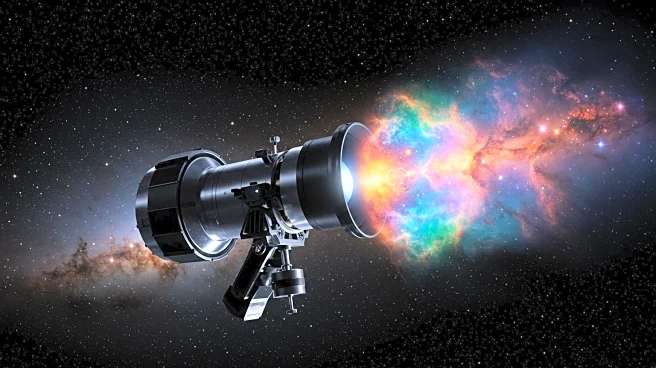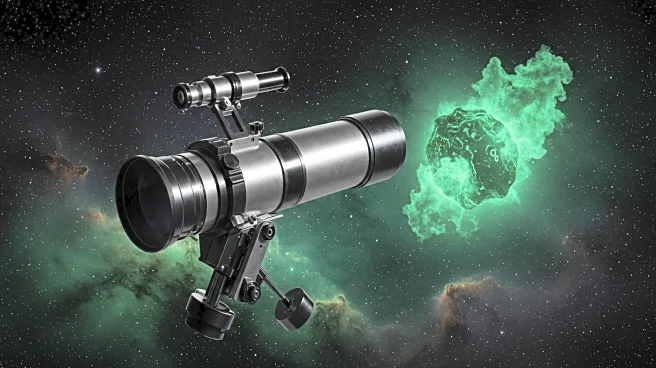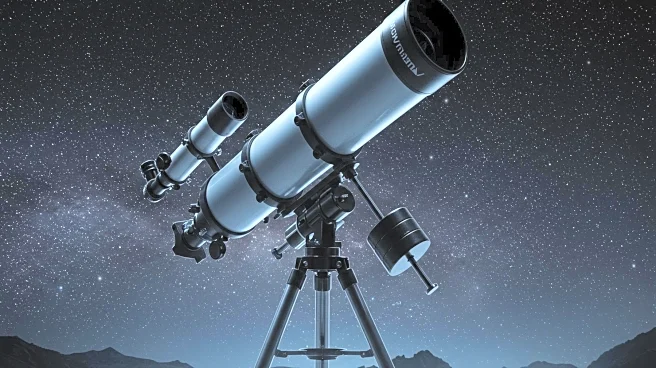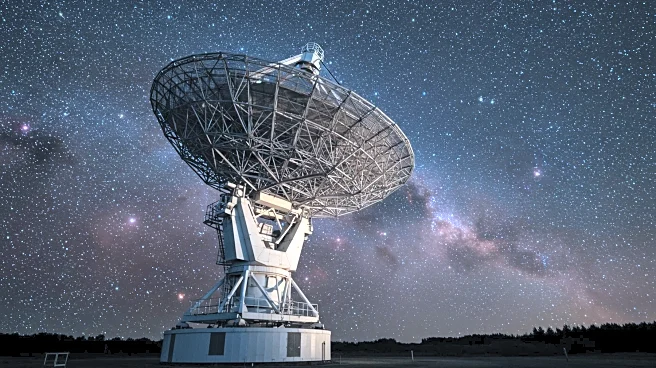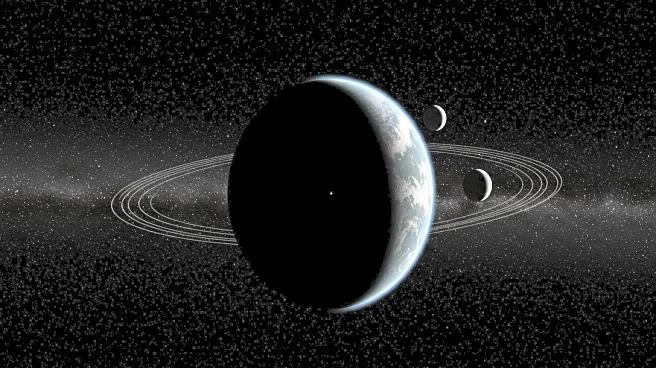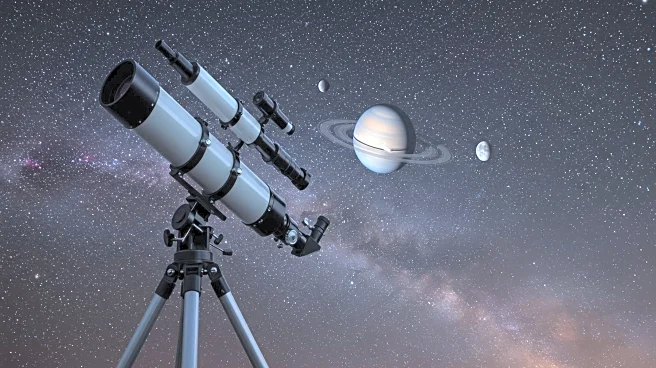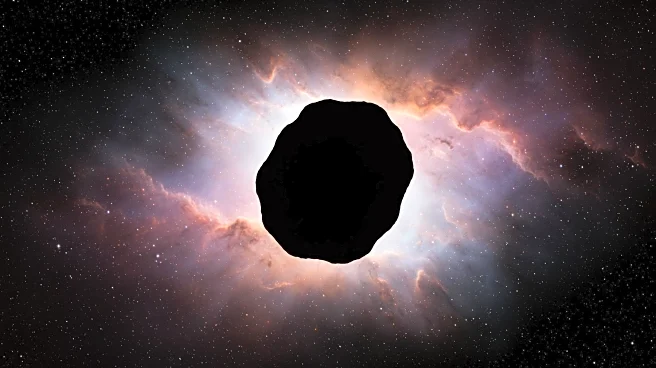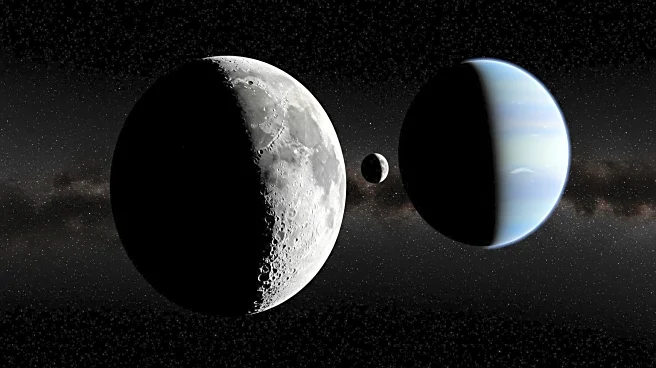What's Happening?
NASA's SPHEREx space observatory has reported new data on the interstellar object 3I/ATLAS, revealing a significant cloud of carbon dioxide (CO2) around it. Observations made between August 8-12, 2025, indicate a CO2 mass loss rate of about 70 kilograms per second, with no detectable water cloud. This finding challenges previous claims of water detection and suggests that 3I/ATLAS may not be a water-rich comet as initially thought. The object's large size and CO2 emissions provide new insights into its composition and behavior.
Why It's Important?
The discovery of CO2 emissions from 3I/ATLAS offers valuable information about the nature of interstellar objects and their potential origins. Understanding the composition and behavior of such objects can enhance our knowledge of the materials present in interstellar space and their interactions with the solar system. This research could have implications for the study of cometary bodies and the processes that govern their formation and evolution. The findings also contribute to the broader field of astrobiology and the search for extraterrestrial life.
What's Next?
Further observations and analyses are needed to determine the full composition and characteristics of 3I/ATLAS. The upcoming data from the James Webb Space Telescope, expected to be released soon, may provide additional insights into the object's structure and origins. Continued study of interstellar objects like 3I/ATLAS will help refine models of their formation and improve our understanding of the solar system's interactions with the broader galaxy.
